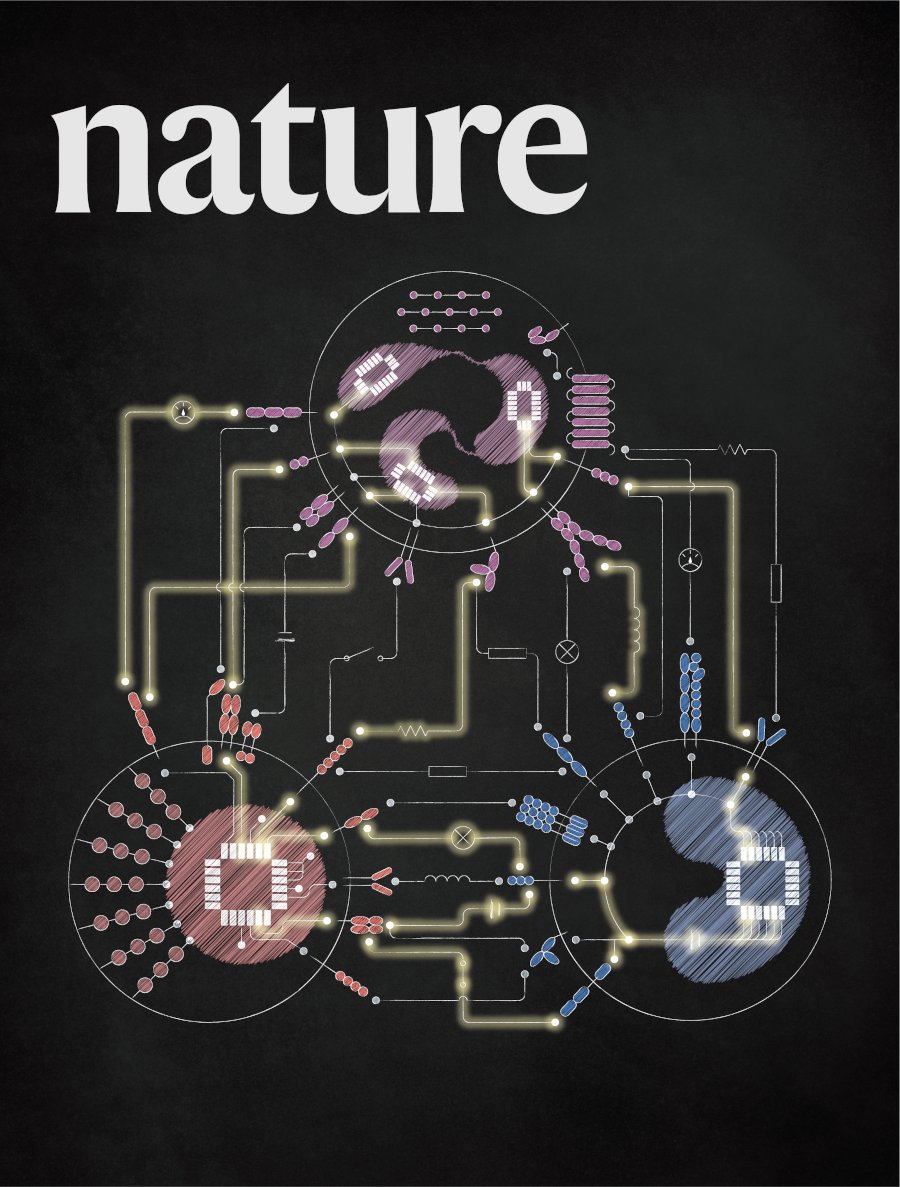
For centuries we've had anatomical maps of how the body's organs are connected, but what would a diagram of the immune system’s connections look like? In @Nature we report our initiative to map the "interactome" that links human immune cells together (1/14)nature.com/articles/s4158… 

The life of an immune cell is constantly on the move. As white blood cells (leukocytes) circulate throughout the body, they must dynamically form connections with each other in order to communicate messages like “threat detected!” or “stop attacking, this is healthy tissue”(2/14)
Leukocytes can physically interact through #receptor proteins on their surfaces that have evolved to recognize and bind each other. These receptor interactions have enormous medical significance, to cite the #immuntherapy revolution in cancer treatment as just one example (3/14) 

Despite their crucial roles, our understanding of which surface receptor proteins bind to each other has remained a patchwork. Without knowing this “wiring diagram”, we cannot know how immune cells coordinate their associations and what messages they are telling each other (4/14)
To fill this gap we systematically characterized the receptor interactions between human leukocytes. To do this we combine biochemistry (to know what interacts), biophysics (to quantify), genomics (to find the cells involved), & functional assays (to know the significance) (5/14)
Our first problem? Immune cells have a lot of different receptors! So our first step was to create a technique that makes it possible to measure hundreds of thousands of binding pairs at high sensitivity while slashing the cost/resources >10-fold compared to similar methods(6/14)
We call the technique SAVEXIS (in homage to AVEXIS). And although it only fills a small corner of 1 figure in the paper, don't glance it over since it can be quite a useful tool. Already it has enabled some impressive ongoing projects (so stay tuned watching this space!) (7/14)
From half a million binding measurements between purified recombinant forms of 630 different leukocyte surface proteins,we could assemble an interactome that accurately captured known binding pairs and made enough discoveries to expand all that was previously known by 20%! (8/14) 

We individually verified every new binding interaction by multiple methods. This gave an interactome that was not only high-quality but also had kinetic data, letting us test theories about why receptor binding strength varies from lasting days to mere fractions of a second(9/14)
Having these layers of quantitative information inspired us to try something new: can we predict inter-cellular behavior from equations describing the molecular behavior of receptors between those cells? Although coarse, such a first-principles model could match cell data (10/14)
To capture the diverse contexts immune cells are found across the body, we integrated public #scRNAseq data with our biochemical interactions. Explore the result:sanger.ac.uk/tool/immune-in…. With it we found hubs and changes linked to disease - yet there's more to be uncovered(11/14) 

But what functions do all these newly discovered interactions have on immune cells? And can any be the basis for new therapeutics? To investigate, we teamed up with @snijderlab, combining their #pharmacoscopy platform with targeted stimulation by purified surface proteins (12/14)
Out of colorful multiplex microscopy images like these, we could then both find proteins which influence the rates at which different human leukocytes physically associate with one another, along with uncover immunomodulatory effects that may be have clinical utility (13/14) 

In sum, we provide a resource for the community, starting points for future projects building on discoveries described here, and a template for answering the grand outstanding question of how communities of cells in the body interact to make multicellular life possible (14/14)
Thanks to and with big help from @teichlab, @roserventotormo, @BerendSnijder, @sangerinstitute, @wellcometrust, @biologyatyork, @nic_sienerth, @czshan, @LeopoldParts, and others not on twitter!
And for everyone complimenting the cover illustration, go see Antonio @bio_graphics_ who made that beautiful graphic for the project! Highly recommended if you're looking for help with #SciComm
• • •
Missing some Tweet in this thread? You can try to
force a refresh



